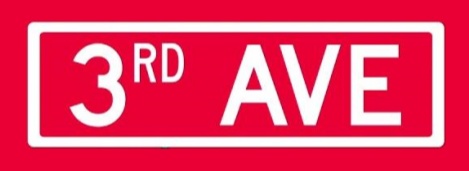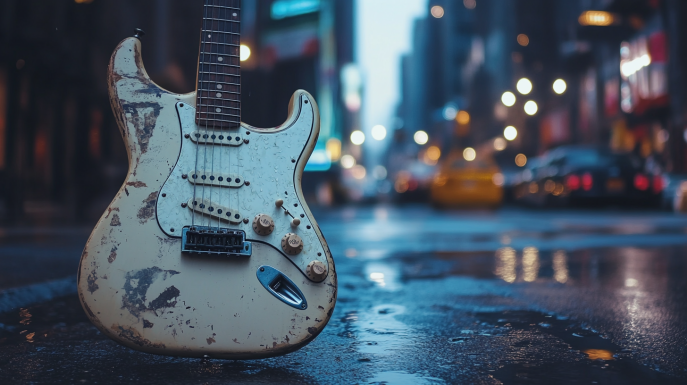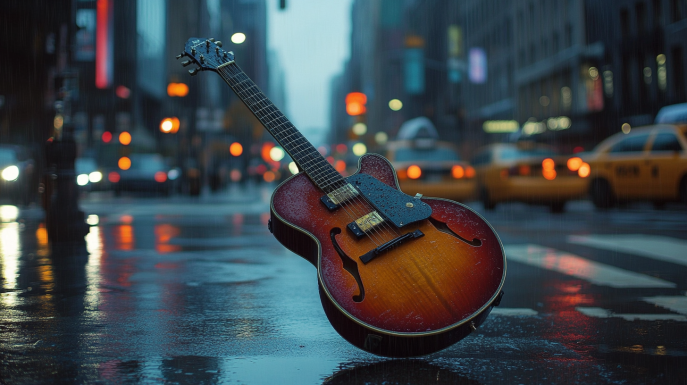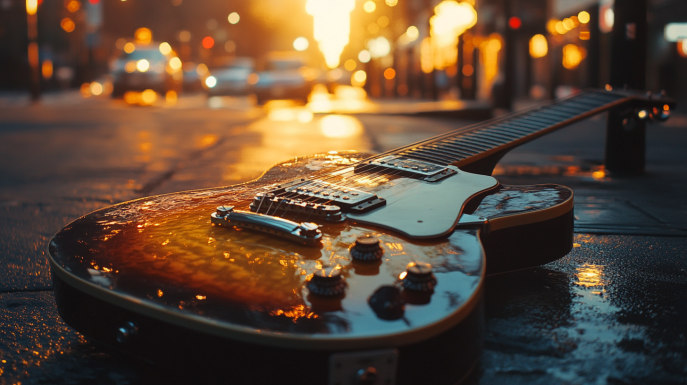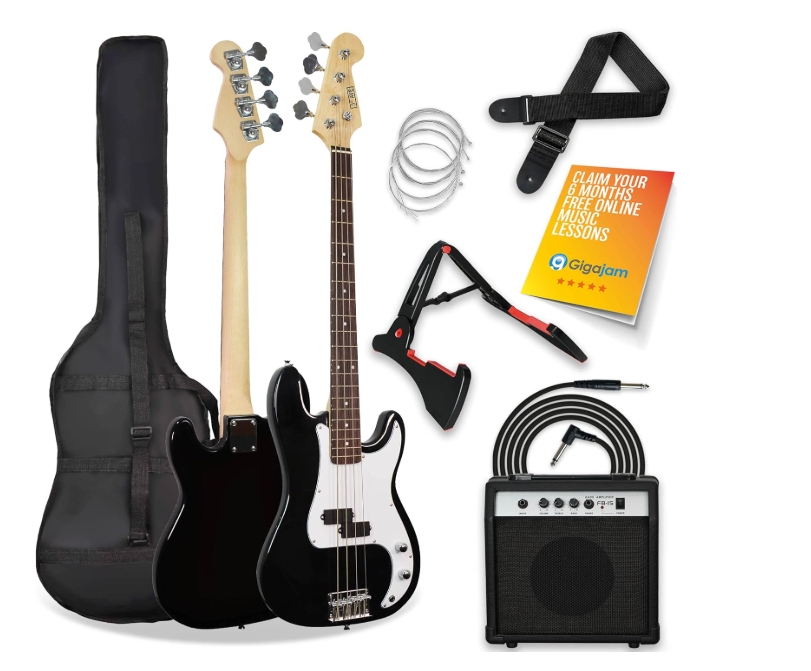
3rd Avenue Full Size 4/4 Electric Bass Guitar Beginner Pack Kit with 15W Amplifier
- ULTIMATE STARTER BUNDLE – This bass guitar package gives you everything you need to start playing; a slimline 15w practise amp with 2 band EQ and headphone input for silent practise housed within a durable cabinet with corner protectors,
Your Complete Resource for Evaluating and Purchasing the 3rd Avenue Bass
The 3rd Avenue bass guitar has become a popular choice for bass players of all skill levels. With its quality components, stylish designs, and affordable prices, the 3rd Avenue bass offers great value compared to other major brands.
However, with so many models and configurations available, it can be tough to know which 3rd Avenue bass is right for your needs and budget. That’s where this comprehensive buying guide comes in. We’ll provide detailed reviews of the key features, pros and cons, and notable models to consider so you can make an informed purchasing decision.
Overview of the 3rd Avenue Brand
3rd Avenue is a musical instrument brand owned by Guitar Center that produces affordable guitars, basses, and other gear. Many of their products are aimed at students and beginners, but they also offer instruments suitable for intermediate and advanced players.
Some key things to know about 3rd Avenue:
- Cost-effective prices – 3rd Avenue instruments are generally priced lower than bigger brands like Fender or Gibson. Basses typically range from $150 to $400.
- Value-focused features – The components and hardware may not be top-of-the-line, but 3rd Avenue uses quality parts for the price.
- Wide range of models – From 4-string to 5-string basses, different body shapes and styles, and starter packs, there are many different configurations to suit different needs.
- Ideal for new players – With a budget-friendly price and versatile designs, 3rd Avenue basses cater well to beginners and students.
- Made by reputable manufacturers – 3rd Avenue has its instruments made by experienced builders like Cort, Samick, and Hohner.
- Sold primarily at Guitar Center – The 3rd Avenue brand is almost exclusively retailed at Guitar Center stores and on their website.
What to Look for in a 3rd Avenue Bass Guitar
When researching the many options in the 3rd Avenue lineup, here are some of the key features to consider:
- Body wood – Basswood, alder, and maple are common tonewoods used. Each has slightly different tonal properties.
- Neck – Maple is a popular neck wood. Make sure it has a comfortable fingerboard and enough frets (at least 20) for versatility.
- Hardware – Diecast tuners and a quality bridge help keep the bass in tune and intonation accurate.
- Pickups – Look for name-brand pickups like ESP or EMG that provide good tone and ample output.
- Controls – At minimum look for master volume and tone knobs. Some models have additional EQ controls.
- Strings – Stainless steel strings are standard. Make sure they are the proper gauge for the bass.
- Weight – Consider the weight and balance of the bass for your needs. Solidbody basses are heavier than hollow bodies.
- Handedness – 3rd Avenue offers left and right-handed basses, so choose your natural handedness.
- Style – Everything from classic Precision-style to more modern designs with unique body shapes.
Pros of 3rd Avenue Basses
There are many advantages that make 3rd Avenue a leading value brand for bass guitars:
- Affordable price – Compared to bigger brands, 3rd Avenue basses cost significantly less, making them ideal for new players on a budget.
- Quality components – While more budget-focused, 3rd Avenue uses hardware and electronics from reputable suppliers.
- Playability right out of the box – Decent factory setups mean most models have comfortable playability without extra tweaking.
- Lightweight design – Many 3rd Avenue basses use basswood bodies and slim neck profiles for reduced weight compared to solid wood designs.
- Variety of models – With various body shapes, scale lengths, and pickup configs, there’s lots of diversity in the lineup.
- Versatile tones – From old school vintage to modern aggressive, the pickups and electronics provide tonal flexibility.
- Sturdy construction – The parts, wood, and workmanship make most 3rd Avenue basses quite road-worthy.
- Ideal starter instrument – The combination of quality, cost, and features make these great “first basses” for new players.
Potential Drawbacks to Consider
While 3rd Avenue basses have a lot to offer, there are a few areas where they may fall short for some players:
- Inconsistent quality control – Being mass-produced imports, there can be some variance in craftsmanship and setup between units.
- Upgrade limitations – The proprietary parts don’t leave much room for modifying or upgrading down the road.
- Limited tonal character – In some cases, the basswood bodies and budget electronics constrain the unique tonal personality.
- Tuning stability issues – Some models may have tuners or bridges that go out of tune more frequently than premium brands.
- No left hand options – Only some 3rd Avenue models are available for left handed players. Options are more limited.
- Heavy use durability unknown – The long-term durability with heavy gigging use is unproven compared to American or Mexican-built instruments.
- Lower resale value – Being a lesser known brand, 3rd Avenue basses don’t tend to hold value for resale like Fender, Gibson, etc.
Key Specs to Compare
Here are some of the most important specifications and components to evaluate when looking at different 3rd Avenue basses:
- Body style – Solid, hollow, or semi-hollow. Affects weight, tone, and sustain.
- Scale length – Short 30″ or full 34″. Dictates string tension and playing feel.
- Wood type – Basswood, alder, maple, etc. Impacts the bass tone and weight.
- Fretboard – Rosewood or maple are most common. Affects playability and aesthetics.
- Neck profile – Thin tapered necks are fast playing while chunky necks provide more mass.
- Nut width – Narrow 1.5″ nuts play easier while wider 1.75″ nuts provide more room.
- Frets – Look for at least 20 medium jumbo frets for the best playability.
- Tuners – Open gear or closed gear tuning machines. Affect tuning stability.
- Bridge type – Usually a basic string-thru design. Make sure it intonates accurately.
- Pickups – Passive single coil, humbuckers, or active pickups. Greatly influence the bass tone.
- Controls – Knobs for volume, bass, mids, treble allow shaping the sound.
- Hardware color – Chrome, black, or gold hardware. Mostly an aesthetic choice.
Best 3rd Avenue Bass Guitar Models
Here is an overview of some of the most popular and best-selling 3rd Avenue bass guitars, along with their key features:
3rd Avenue Premium Electric Bass
- Body: Basswood
- Neck: Maple with rosewood fretboard
- Scale: 34″
- Frets: 22 medium jumbo
- Pickups: Custom single coil
- Controls: 1x volume, 1x tone
- Tuners: Open gear
- Bridge: 3-Saddle
This is one of the top sellers with a versatile single coil pickup configuration, smooth playable neck, and contoured ergonomic body shape. Available in 4 and 5 string versions.
3rd Avenue Pro Solidbody Electric Bass
- Body: Solid alder
- Neck: Maple with laurel fretboard
- Scale: 34″
- Frets: 24 jumbo
- Pickups: ESP designed split coil
- Controls: 2x volume, 1x tone
- Tuners: Die-cast
- Bridge: 4-Saddle adjustable
The alder wood provides excellent resonance and sustain. Hot split coil pickups deliver a wide tonal range. Extended 24-fret neck allows for soloing high up the register.
3rd Avenue Hollowbody Electric Bass
- Body: Maple laminate hollowbody
- Neck: Maple with rosewood fretboard
- Scale: 30″
- Frets: 20 medium
- Pickups: Artec vintage single coil
- Controls: 1x volume, 1x tone
- Tuners: Open gear vintage style
- Bridge: Adjustable bridge with stop tailpiece
This hollowbody delivers warm vintage tones reminiscent of an upright double bass. The short 30″ scale makes it very comfortable for less experienced players to handle.
3rd Avenue Deluxe Electric Bass Pack
- Body: Poplar body with contoured cutaways
- Neck: Maple with rosewood fretboard
- Scale: 34″
- Frets: 24 medium jumbo
- Pickups: Standard split coil
- Controls: 1x volume, 1x tone
- Tuners: Diecast
- Bridge: Vintage hardtail bridge
- Includes: Bass gig bag, clip-on tuner, strap, picks, cable, and amp
This value-packed bundle comes with everything you need to get practicing and performing. A versatile bass with great playability combined with useful accessories.
Setting up Your 3rd Avenue Bass Guitar
Strings – Your 3rd Avenue will typically come with roundwound stainless steel strings installed, usually a .45-.100 set for 4-string basses and a .45-.130 set for 5-strings. These are versatile for most styles. For smoother playing, you can try flatwound or tapewound strings. Make sure to choose the proper scale length.
Tuning – Tuning is standard E-A-D-G for 4-strings, with low B added for 5-strings. Use a chromatic tuner and tune to the correct pitch. The tuning machines may stick at first, but should hold tune once broken in.
Intonation – Make sure the saddles on the bridge are set so notes fretted up the neck are in tune with the open strings. Adjust each saddle forward or backward as needed.
Action – There should be just a little fret buzz when plucking the strings hard. If action is too high, the bass will be hard to play. If it is too low, fret buzz and choking can occur. The truss rod inside the neck can be adjusted to alter action.
Electronics – Make sure volume and tone knobs are functioning properly through the full rotation range. If the output sounds low, you may need to raise the pickup height closer to the strings.
Replacing Parts – The hardware is metric, so replacement parts should be ordered as such. Tuners and bridges can be swapped out easily. Pickguard changes can update the look.
Modifications – Limited upgrade potential, but pickups, tuners, and hardware can be changed. Luthier work may be needed for any major modifications.
With the right setup and adjustments, a 3rd Avenue bass can play and sound just as good as more expensive instruments. Take time to properly tweak and customize it to your personal preferences.
Amplification for 3rd Avenue Basses
Choosing the right bass amp ensures your 3rd Avenue bass sounds its very best. Here are the amp features to look for in the various price ranges:
Beginner amp – At least 100 watts with a 10-12″ speaker. EQ controls and headphone jack. Ampeg BA Series, Fender Rumble, Peavey Max, etc under $200.
Intermediate amp – 300+ watts with a 15″ speaker for more volume and tone. Preamp overdrive and D.I. output. Ampeg BA-300, Fender Rumble 500, GK MB200 around $400.
Professional amp – 500+ watts with neodymium speakers and a tweeter or horn for clear highs. Robust EQ to shape your ideal sound. Ampeg SVT, GK MB500, MarkBass heads $800+.
Modeling amp – Onboard bass effects like chorus, flanger, octave plus amp emulations. Great variety of tones. Fender Mustang, Vox Valvetronix, Roland Cube.
Hybrid amp – Blends analog tube preamp warmth with solid state power for rich sound. Orange Terror, Ampeg PF-500, TC Electronic RH.
Bass cabs – For serious low end, add an external 1×15 or 4×10 bass cabinet. Makes a tube amp shine. Orange, Avatar, Gallien Krueger.
To get the most bang for your buck, choose an amp that balances power, tonal control, and features within your budget. And don’t forget cables, pedals, straps and other essential accessories!
How the 3rd Avenue Compares to Other Brands
Here’s a brief rundown of how 3rd Avenue basses stack up to some of the leading bass guitar brands:
Fender – The gold standard. Better quality parts and craftsmanship with “name brand” prestige, but 2-3x the cost of 3rd Avenue.
Ibanez – Comparable quality and components to 3rd Avenue. More stylish designs tailored to contemporary players.
Squier – Fender’s budget line. Similarly priced to 3rd Avenue but with the Fender brand name. Not necessarily better quality.
Epiphone – Gibson’s affordable brand. Somewhat higher prices than 3rd Avenue but with improved electronics and hardware.
Yamaha – Known for quality and consistency. Similar prices as 3rd Avenue but with better name recognition.
Sterling – Ernie Ball’s import line. Slightly lower cost than 3rd Avenue but with modern/metal appeal.
G&L – Leo Fender’s company. Moderately higher prices but premium USA-built quality.
Ultimately, 3rd Avenue competes well with other lower-cost import basses while offering its own unique designs and features. The value and playability make them excellent starter instruments.
Beginner Guide to the 3rd Avenue Bass
For those picking up bass guitar for the first time, the 3rd Avenue is an ideal starter instrument. Here are some beginner tips for learning on a 3rd Avenue bass:
- Start with the basics – proper way to hold the bass, pick/finger technique, fretting hand form. Build muscle memory.
- Practice playing scales and melodies slowly to develop dexterity. Gradually increase speed.
- Use the open strings to learn finding notes and intervals by ear.
- Learn common chord progressions like I-IV-V in major and minor keys. Lock in with the bass drum.
- Develop rhythm by using a metronome or drum loops. Groove with the beat.
- Jam along to songs you like. Pick out the basslines by ear.
- Learn to use your amp EQ to shape the lows, mids, and highs. Dial in a punchy tone.
- As your skills progress, increase to faster tempos, more advanced techniques like slapping/popping, and more complex basslines.
- Upgrade your gear piece by piece – better strings, tuner, strap, pedals. Every improvement counts.
Stick with consistent practice on the 3rd Avenue and you’ll be well on your way to mastering bass guitar fundamentals. Take advantage of the quality components and versatile design to hone your skills.
Where to Buy a 3rd Avenue Bass Guitar
Since 3rd Avenue is a Guitar Center exclusive brand, purchasing options are limited primarily to:
Guitar Center – Available at most nationwide GC store locations, with the best selection. Try out different 3rd Ave models in person.
Guitar Center Used – Large inventory of used 3rd Ave basses available in GC stores and online. Provide big discounts vs new.
Guitar Center Online – Order a new 3rd Avenue for delivery directly to your home. Convenient purchasing minus the store visit.
Musician’s Friend – Owned by Guitar Center, MF is an authorized 3rd Ave dealer with selection online.
Third party sellers may carry limited quantities on Amazon and eBay but pricing is not as competitive. Your best bet is to stick with Guitar Center directly for the full model range in new and used condition. Take advantage of their low pricing, financing plans, and 45 day free returns to land the perfect 3rd Avenue bass.
Reviews from Real 3rd Avenue Bass Owners
Here are excerpts from genuine customer reviews that highlight the real-world pros and cons of the 3rd Avenue bass guitar:
“This is my first bass and I’m really impressed with it so far. The tone is great, very punchy when you dig in. No issues staying in tune or playability. The neck has a nice thin profile that makes it easy to move around on.”
“I picked the blue sparkle finish model and it looks really cool on stage under the lights. Fit and finish seems excellent. Added some flats and adjusted the setup to my liking. Killer value!”
“Don’t expect the same quality as an American Fender but honestly this plays great for 1/3 the cost. I upgraded the bridge saddles and installed foam under the pickguard and it improved the sustain.”
“The hollowbody has such a deep robust tone, way better than I expected at this price point. The short scale neck combined with the slim taper makes sliding and moving around effortless.”
“The active EMG pickups on the 5-string model have lots of punch and low end. Combined with the thinner neck, this bass is perfect for modern metal playing.”
“My only complaint is the tuners don’t hold tune quite as well as I’d like. But for the money I really can’t fault it much. It’s a fantastic beginner instrument.”
Maintaining and Caring for a 3rd Avenue Bass
- Storage – Keep in a humidity-controlled environment when not playing. Don’t leave sitting in hot cars or direct sunlight.
- Cleaning – Wipe down the body, neck, and fretboard regularly with a soft dry cloth. Finger oils can build up on the fretboard; clean it with lemon oil or fretboard cleaner.
- Tuning – Check tuning before playing. If strings don’t hold tune well, lubricate the nut slots with graphite or replace old strings.
- Neck relief – Adjust truss rod as needed to match string tension and prevent fret buzz. Don’t over-tighten.
- Electronics – If controls start crackling, spray with contact cleaner. Check pickup wire solder joints and battery compartments.
- Hardware – Lube bridge saddle slots, nut, and tuning machines with guitar polish to prevent binding. Tighten any loose screws.
- Frets – If frets start sprouting sharp ends, carefully file them flush. Have a pro do a refret if significant wear occurs.
- Cracks – Inspect for any hairline cracks in the body or neck. These can expand over time and need pro repair.
- Refurbishing – Consider pickguard replacement, control knobs, pickup upgrades, and tuner replacements to give a facelift.
With proper care and maintenance, a 3rd Avenue bass can provide many years of use well beyond the initial purchase price.
Is the 3rd Avenue Suitable for Intermediate Players?
The 3rd Avenue bass guitar line offers instruments suitable for everything from beginners to intermediate players. Here’s how it can support developing bassists:
- The hardware, electronics, and components are built to handle regular playing without issues. The fretwork and setup will accommodate harder playing.
- Models with active pickups, like the EMG equipped 5-string, provide the output and tone for aggressive play. The split coil pickups also offer modern, punchy tone.
- Extended range 5-string options allow for diving into playing techniques like slapping, tapping, and soloing higher up the neck.
- The thinner neck profiles and narrow nut widths improve playability for demanding basslines and quicker tempos.
- Having 24 frets gives 2 full octaves to work with on the extended range models.
- While not the same grade as pro instruments, the hardware stands up reasonably well to regular gigging use.
- The models with 2-band EQ controls allow shaping a more refined tone for recording sessions or practice.
- A budget friendly price leaves room in the budget for pedals, amp upgrade, or professional setup for performance needs.
The main limitations intermediate players may encounter revolve around quality control inconsistencies, tuning stability issues, and limited tonal variety on passive pickup models. But overall, the 3rd Avenue works quite well for progression beyond beginner status.
3rd Avenue Bass Body Woods
3rd Avenue uses several popular basswoods, each with their own tonal properties:
- Basswood – Very common, inexpensive wood that is lightweight and resonant. Provides balanced tone across lows, mids, and highs.
- Alder – Bright, clear tone with excellent sustain and attack. Naturallycompressing. Commonly used for Jazz and Precisions.
- Maple – Very dense and rigid. Maple has a focused low end, punchy mids, and smooth high end. Adds clarity and cut.
- Mahogany – A warmer wood with softened highs and strong low mids. Boosts low end resonance. Frequently used by Gibson.
- Walnut – Jazzy, round lows with pleasing highs. Falls between the brightness of maple and warmth of mahogany.
- Poplar – Economical option related to alder. Provides vintage style tone – open lows with transparent mids/highs.
- Ash – Bright and snappy like alder but with enhanced lows and longer sustain. Provides classic Fender twang.
- Basswood vs. Alder – Basswood has more scooped mids while alder has prominent mids. Basswood gives a fuzzier tone.
3rd Avenue leverages a range of tonewoods to cater to different tonal tastes, from modern to vintage to everything in between.
How the 3rd Avenue Bass Compares Tonally
The electronics, hardware, and wood combinations used in 3rd Avenue basses provide sound quality that competes well against other major brands:
- Versus Fender – The alder bodies offer comparable brightness and snap. Not as refined overall but still versatile.
- Versus Ibanez – The basswood models have a smoother, warmer tone vs the punch and attack of Ibanez’s basswood/maple necks.
- Versus Gibson – The mahogany 3rd Avenue models can approach Gibson’s rounded warmth but lack the rich low mids.
- Versus Spector – The active EMGs produce great modern metal tones, though not quite as thunderous as Spector’s active soapbars.
- Versus Warwick – Warwick’s exotic tonewoods provide more complex harmonics than 3rd Avenue’s traditional basswoods.
- Versus Sire – Very similar overall, though Sire leans brighter with more top end clarity.
- Versus Schecter – The cheaper end Schecters are comparable, but higher models have more refined EQ and active preamps.
When properly setup, the 3rd Avenue holds up respectably against the core tone qualities of better known competitors, especially considering the more budget friendly pricing.
What Comes in a 3rd Avenue Starter Pack?
3rd Avenue’s value-packed electric bass starter bundles come equipped with everything a new bassist needs to begin playing. Here’s what is typically included:
- Bass guitar – The starter packs feature one of 3rd Avenue’s top selling bass models such as the single coil Premium or the Pro with split-coil pickups.
- Bass amp – A 10-25 watt practice amp with an 8 or 10 inch speaker to produce those essential low frequencies.
- Gig bag – Lightweight and protects the bass when transporting. Some packages may include a hard case instead.
- Strap – Adjustable fabric or leather strap usually included in black. Makes standing with the bass comfortable.
- Cable – A 10-15 foot instrument cable to connect the bass to the amp. May be coiled or straight.
- Tuner – Small chromatic clip-on tuner that attaches right to the bass headstock for quick tuning.
- Picks – Several celluloid picks of varying thickness, from .5mm to 1.0mm. Lets you try different pick feels.
- Accessories – Extra items like a cleaning cloth, strings, pick holder, or even a DI box may be bundled in.
The 3rd Avenue starter packs provide tremendous value. For one reasonable price, the major gear essentials are covered so you can start learning and playing songs right away.
Are Left Handed 3rd Avenue Models Available?
Unfortunately, the selection of left handed (reverse body) 3rd Avenue bass models is quite limited:
- Only a handful of models are produced in left handed versions
- The most commonly found left handed model is the 3rd Avenue Premium 4-string bass in black finish.
- Left hand 5-string models are almost non-existent. Finding a short scale is also rare.
- Guitar Center used inventory provides the best chance at finding a left handed model. But stock is not consistent.
- When a left handed 3rd Avenue is available, they hold value on the used market due to scarcity.
- Modifying a right handed model into a lefty is possible but requires some professional luthier work.
For left handed players seeking a quality starter bass with a budget friendly price, the slim pickings of left hand 3rd Avenue models are an unfortunate downside. But the bright side is the few models that are produced cater extremely well to left handed beginners when they can be found in stock.
The Takeaway on 3rd Avenue Basses
When reviewing all the specs, models, and real world experiences of players, 3rd Avenue basses prove to offer tremendous bang-for-buck. What you give up versus premium instruments in craftsmanship and components is more than made up for in value.
For the beginning student or intermediate player on a tight budget, no other brand can match the combination of price, quality, and versatility. And the wide selection of designs means there’s a 3rd Avenue bass ideally suited for virtually any playing style.
Sure, you may need to swap a bridge, lubricate some tuners, or shim a neck at times. But every guitar in this price range requires a little TLC. For those seeking quality and affordability over prestige, 3rd Avenue hits the sweet spot.
So for your first bass, backup practice bass, or just another instrument to add to your collection, you can be confident a 3rd Avenue will provide years of enjoyment andgrowth on your musical journey. Grab one today and start laying down the grooves!
